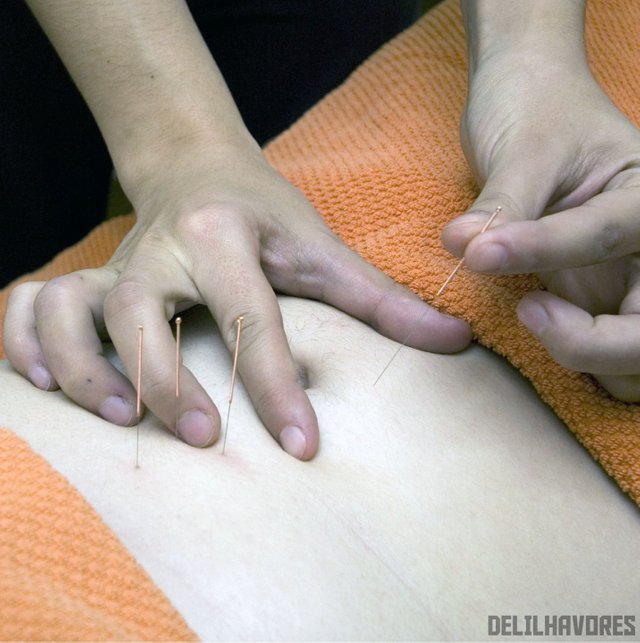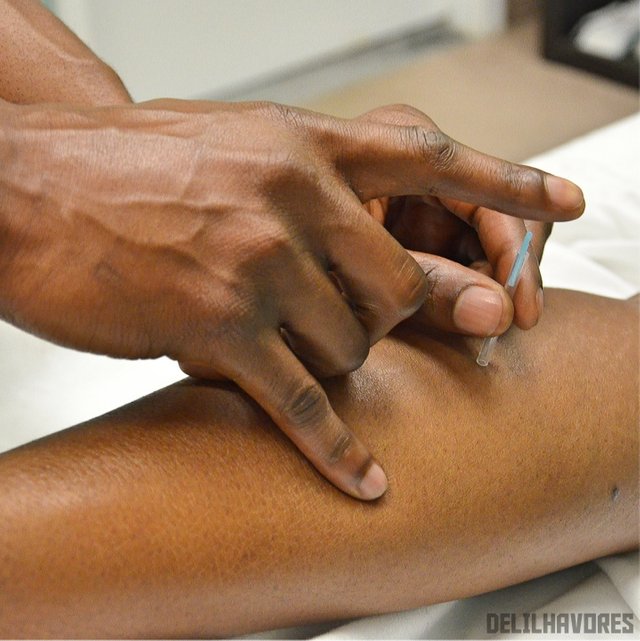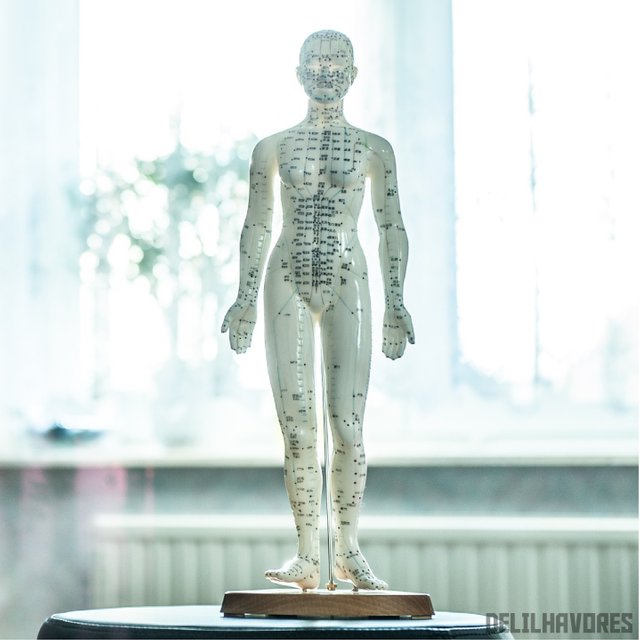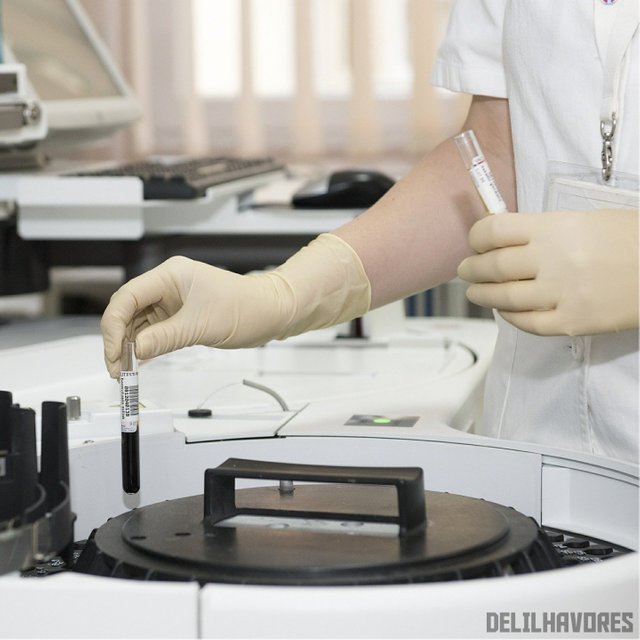Acupuncture – L’agopuntura
Hello everybody,
Today I would like to discuss one of the oldest known alternative medicine practices: acupuncture.
Introduction and history
First, what is meant by alternative medicine? Wanting to define it, it is the "very extensive and heterogeneous set of diagnostic-therapeutic practices that are not officially incorporated into modern scientific medicine". Some examples of these practices are acupuncture, auriculotherapy, phytotherapy, homeopathy, ... Some of these practices have shown true scientific evidence, others are being studied but are less promising, if not even considered fallacious.
The origins of acupuncture are very remote. In fact, this practice belongs to traditional Chinese medicine and involves the insertion of very thin needles in particular body sites, called "acupoints", for the therapeutic purpose of relieving pain (both on site and at a distance from the inoculation site).
Accredited historical sources believe that in ancient China already 3000/4000 years ago rudimentary needles made from bones or sharp flints were stuck in particular body sites. Historically, the medical text that speaks of the oldest acupuncture that has come down to us is "Neijing Suwen", which dates back to the second century. B.C..
Mechanism of action
The effectiveness of acupuncture has recently been demonstrated by its interaction with an ubiquitous molecule present in our body: adenosine. In fact, this ancient medical practice works by promoting its release. The pain circuits are closely interconnected and adenosine seems to be a key in the transmission of pain signals to the brain.
Adenosine is a nucleoside that is made up of adenine attached to a part of the ribose molecule. In the body, adenosine helps in the transfer of cellular energy by forming molecules such as adenosine triphosphate and adenosine diphosphate. It also has a role in cell signaling. The role in the brain is very important: in fact, here it is an inhibitory neurotransmitter and it deals with regulating sleep cycles. Adenosine also causes dilation of the coronary blood vessels, improving blood circulation to the heart and is also known for its anti-inflammatory properties.
But the most interesting action for the purpose of acupuncture is the analgesic action, due to the fact that adenosine is produced at the level of the skin and performs its action on the occasion of injuries through the inhibition of the transmission of pain signals.
The experiment
All this has been verified by research conducted by the neurobiologist M. Nedergaard and collaborators at the University of Rochester Medical Center and published in the journal "Nature - Neuroscience".
In the experiment, the researchers acupuncture a group of suffering mice in one leg for 30 minutes in appropriate locations, noting that, in the specimens that were able to produce adenosine, the treatment reduced the pain by two thirds and that during and immediately after acupuncture treatment the level of adenosine in the tissues was 24 times higher than normal.
However, improvement was not observed in mutated mice so that their cells were unable to produce receptors for adenosine.
Finally, the disorder was also reduced by activating adenosine without resorting to acupuncture.
Subsequently, the researchers tested the effects of deoxycoformicin, a drug used in the treatment of some leukemias, which has the property of inhibiting the degradation of adenosine in the tissues, noting that in this way the effects of acupuncture were drastically enhanced: the triplication of the levels of adenosine in the mucous membranes corresponded to an equally significant prolongation of the analgesic action.
Clarifications and my personal opinion
According to data reported by the Italian Acupuncture Association there would be approximately 6 million Italians who resort to acupuncture every year and there would be approximately 12 thousand acupuncturists, a number that places Italy in third place after China and Japan. How is it possible? Certainly the fact that it has been the most widespread medical practice in some parts of the world for about 4000 years has helped to spread it, but I honestly think that the reason does not lie here.
In fact, recently in Italy there has been an increasingly fierce loss of confidence towards traditional and verified medicine. I think this is very dangerous, as the so-called alternative or complementary medicine does not rely on solid scientific evidence! Certainly M. Nedergaard's experiment is an important state for laying a basis for subsequent future studies, but I don't feel like saying that it was sufficient and exhaustive. Many other studies will be needed for acupuncture to be guaranteed in modern medicine.
It is very important to always check what the scientific bases of what is proposed as therapy are. This is because they are not uncommon in cases of fraud and/or damage to the patient who, disheartened by traditional medicine, often throws himself into the unknown of alternative medicine.
We must not forget that some ancient practices were abandoned in favor of modern ones, precisely because medicine, being a science, always tends to continuous improvement and change!
Delilha
ITA
Ciao a tutti,
Oggi vorrei discutere di una delle più antiche pratiche di medicina alternativa conosciute: l’agopuntura.
Introduzione e storia
Innanzitutto, che cosa si intende con medicina alternativa? Volendola definire, si tratta dell’”insieme molto esteso ed eterogeneo di pratiche diagnostico-terapeutiche che non sono ufficialmente incorporate nella moderna medicina scientifica”. Alcuni esempi di queste pratiche sono l’agopuntura, l’auricoloterapia, la fitoterapia, l’omeopatia, … Alcune di queste pratiche hanno dimostrato vere evidenze scientifiche, altre sono oggetto di studio ma sono meno promettenti, se non addirittura considerate fallaci.
Le origini dell’agopuntura sono molto remote. Infatti, questa pratica appartiene alla medicina tradizionale cinese e prevede l’infissione di sottilissimi aghi in particolari siti corporei, chiamati “agopunti”, allo scopo terapeutico di alleviare il dolore (sia in loco sia a distanza dalla sede di inoculazione).
Fonti storiche accreditate ritengono che nella Cina antica già 3.000/4.000 anni fa si infiggessero rudimentali aghi ricavati da ossa o selci acuminate in particolari siti corporei. Storicamente, il testo medico che parla dell’agopuntura più antico che ci è pervenuto è “Neijing Suwen”, il quale risale al II sec. a.C..
Meccanismo d’azione
L’efficacia dell’agopuntura è stata recentemente dimostrata dalla sua interazione con una molecola ubiquitaria presente nel nostro organismo: l’adenosina. Infatti, questa antica pratica medica agisce favorendone il rilascio. I circuiti del dolore sono strettamente interconnessi e l’adenosina sembra essere una chiave nella trasmissione dei segnali dolorifici al cervello.
L'adenosina è un nucleoside che si compone di adenina fissata ad una parte della molecola di ribosio. Nell'organismo, l’adenosina aiuta nel trasferimento di energia cellulare formando le molecole come l'adenosintrifosfato e l'adenosindifosfato. Essa ha anche un ruolo nella segnalazione cellulare. Molto importante è il ruolo nel cervello: infatti, qui è un neurotrasmettitore inibitorio e si occupa di regolare i cicli del sonno. L’adenosina causa anche dilatazione dei vasi sanguigni coronari, migliorando la circolazione sanguigna al cuore ed è conosciuta anche per le sue proprietà antinfiammatorie.
Ma l’azione più interessante ai fini dell’agopuntura è l’azione analgesica, dovuta al fatto che l’adenosina è prodotta a livello della cute ed esplica la sua azione in occasione di lesioni attraverso l’inibizione della trasmissione di segnali dolorifici.

L’esperimento
Tutto ciò è stato appurato una ricerca condotta dal neurobiologo M. Nedergaard e collaboratori presso lo University of Rochester Medical Center e pubblicata sulla rivista "Nature - Neuroscience".
Nell'esperimento, i ricercatori hanno sottoposto ad agopuntura per 30 minuti in sedi opportune un gruppo di topi sofferenti a una zampa, rilevando che, negli esemplari che erano in grado di produrre adenosina, il trattamento riduceva il disturbo di due terzi e che durante e subito dopo il trattamento con l'agopuntura il livello di adenosina nei tessuti erano 24 volte superiori al normale.
Il miglioramento non era invece osservabile nei topi mutati in modo che le loro cellule non fossero in grado di produrre i recettori per l'adenosina.
Infine, il disturbo veniva ridotto anche attivando l'adenosina senza ricorrere all'agopuntura.
Successivamente, i ricercatori hanno sperimentato gli effetti della deossicoformicina, un farmaco utilizzato nel trattamento di alcune leucemie, che ha la proprietà di inibire la degradazione dell'adenosina nei tessuti, rilevando che in tal modo gli effetti dell'agopuntura risultavano drasticamente potenziati: alla triplicazione dei livelli di adenosina nelle mucose corrispondeva un altrettanto significativo prolungamento dell'azione analgesica.
Precisazioni e mia opinione personale
Secondo dati riportati dall'Associazione Italiana Agopuntura sarebbero circa 6 milioni gli italiani che ogni anno ricorrono alla pratica dell’agopuntura e sarebbero circa 12 mila i medici agopuntori, numero che pone l'Italia al terzo posto dopo Cina e Giappone. Come è possibile? Sicuramente il fatto di essere stata per circa 4000 anni la pratica medica più diffusa in alcune parti del mondo ha aiutato alla sua diffusione, ma onestamente penso che non risieda solo qui il motivo.
Infatti, di recente in Italia si assiste a una sempre più feroce perdita di fiducia nei confronti della medicina tradizionale e verificata. Ritengo che questo sia molto pericoloso, in quanto la cosiddetta medicina alternativa o complementare non si pone su solide evidenze scientifiche! Certamente l’esperimento di M. Nedergaard è stato importantissimo per porre una base per successivi studi futuri, ma non me la sento di affermare che sia stato sufficiente ed esauriente. Affinché l’agopuntura possa essere considerata nella medicina moderna saranno necessari molti altri studi.
È molto importante verificare sempre quali siano le basi scientifiche di ciò che viene proposto come terapia. Questo perché non sono rari i casi di truffa e/o di danno nei confronti del paziente che, sfiduciato dalla medicina tradizionale, spesso si butta nell’ignoto della medicina alternativa.
Non dobbiamo dimenticare che se si sono abbandonate delle pratiche antiche in favore di quelle moderne è proprio perché la medicina, essendo una scienza, sempre tende al continuo miglioramento e cambiamento!
Delilha
Sources – Fonti: "Treccani"; "LeScienze".



se ne è parlato sempre tanto di agopuntura....non ho mai ricorso ad essa ma se le persone continuano a richiederla credendoci, vuol dire che ha sortito i suoi effetti benefici
Eh già, pazzesco! E pensare che è una disciplina che ha origini antichissime :)
Questo post è stato condiviso e votato all'interno del discord del team curatori di discovery-it.
This post was shared and voted inside the discord by the curators team of discovery-it